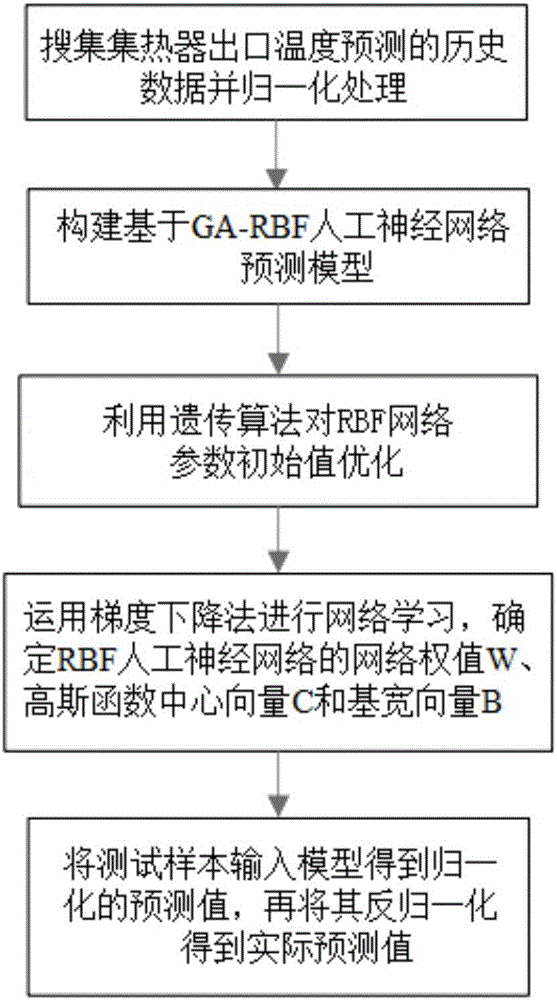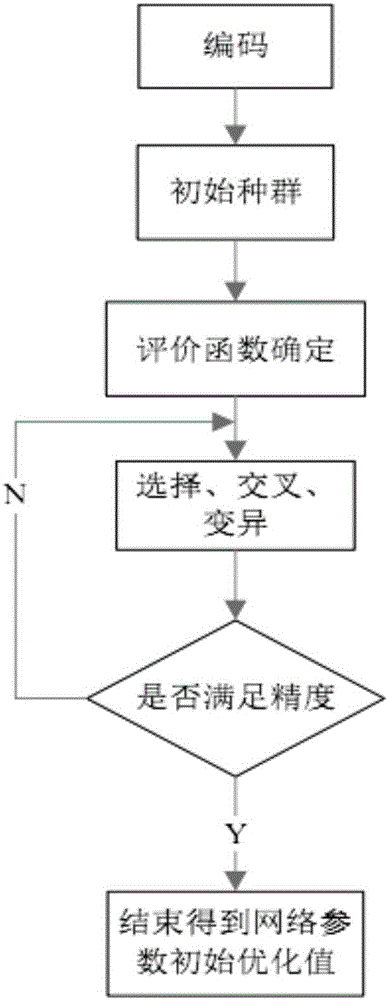Method for predicting outlet temperature of disk-type solar heat collector based on GA-RBF
A technology for solar collectors and outlet temperature, which is applied in the direction of neural learning methods, instruments, and special data processing applications, and can solve problems such as inaccurate prediction of dish-type solar power generation and difficult and difficult modeling of outlet temperature
- Summary
- Abstract
- Description
- Claims
- Application Information
AI Technical Summary
Problems solved by technology
Method used
Image
Examples
Embodiment
[0054] A GA-RBF-based method for predicting the outlet temperature of dish solar collectors, such as figure 1 , including the following steps:
[0055] Step 1. Obtain the historical data of factors related to the outlet temperature of the dish system collector, use the historical data of atmospheric temperature, humidity, solar radiation and air flow rate, normalize the historical data, and construct the collector outlet temperature training sample.
[0056] Firstly, the historical data such as atmospheric temperature, humidity, solar radiation and air velocity are linearly transformed, and normalized by the maximum and minimum values. Specifically: Find out M sets of historical data of atmospheric temperature, humidity, solar irradiance, and air velocity. Each historical data is the corresponding data recorded by the dish system every 10 seconds. Among them, temperature, humidity, solar irradiance and air velocity are the input 4-dimensional data, and wind speed is the outpu...
PUM
 Login to View More
Login to View More Abstract
Description
Claims
Application Information
 Login to View More
Login to View More - R&D
- Intellectual Property
- Life Sciences
- Materials
- Tech Scout
- Unparalleled Data Quality
- Higher Quality Content
- 60% Fewer Hallucinations
Browse by: Latest US Patents, China's latest patents, Technical Efficacy Thesaurus, Application Domain, Technology Topic, Popular Technical Reports.
© 2025 PatSnap. All rights reserved.Legal|Privacy policy|Modern Slavery Act Transparency Statement|Sitemap|About US| Contact US: help@patsnap.com



